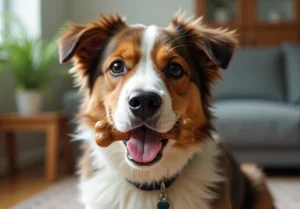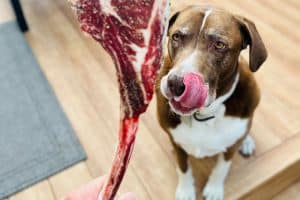Cats and dogs may both be beloved household pets, but have you ever noticed the stark difference in their tongues? While cats have rough tongues, perfect for grooming and hunting, dogs have much smoother tongues. But why is that?
Cats have rough tongues due to tiny, hook-like structures called papillae that help them clean their fur and scrape meat off bones. Dogs, on the other hand, have smoother tongues without these specialized structures. But the reasons behind this fascinating contrast go much deeper. Let’s take a closer look at why cats have rough tongues but not dogs.
Evolutionary Adaptations
Cats and dogs have evolved differently over thousands of years, leading to the development of their unique tongue structures. Cats have rough tongues due to tiny, hook-like structures called papillae that cover their tongues. These papillae help cats groom themselves more effectively by acting as a built-in comb to remove dirt and loose fur from their coats. On the other hand, dogs have smoother tongues designed to help them lap up water more efficiently. This evolutionary difference is a result of the specific needs each species had to adapt to in their environments over time.
Grooming Techniques
Cats and dogs both use their tongues for grooming, but their techniques vary. Cats rely on their rough tongues to strip away debris and tangles from their fur, leaving them with a clean and sleek coat. The texture of a cat’s tongue also helps to distribute natural oils produced by their skin, keeping their fur healthy and shiny. Conversely, dogs use their smooth tongues to clean themselves as well, but they may require additional grooming tools due to their lack of specialized tongue structures. This difference in grooming techniques highlights the importance of the rough versus smooth textures of cat and dog tongues in maintaining their overall cleanliness and health.
Additional Unique Insight:
One interesting fact is that a cat’s rough tongue is also designed to help them remove the flesh from the bones of their prey more efficiently. The barbs on their tongues can easily strip meat from bones, aiding in their survival and ability to consume prey effectively.
Remember, understanding the evolutionary adaptations and grooming techniques of cats and dogs can provide valuable insight into why cats have rough tongues while dogs do not. By appreciating these unique characteristics, we can better understand and care for our beloved feline and canine companions.
Feeding Behaviors
Cats and dogs have different feeding behaviors that have influenced the evolution of their tongue textures. Cats are obligate carnivores, meaning their diet consists primarily of meat. Their rough tongues, equipped with tiny hook-like structures called papillae, help them scrape meat off bones and groom their fur efficiently. On the other hand, dogs are omnivores with a more varied diet that includes plant matter. They do not need the specialized texture of a cat’s tongue for eating and grooming purposes, hence their tongues are smoother in comparison.
Papillae Functions
The papillae on a cat’s tongue serve specific functions that differentiate them from a dog’s smoother tongue. These tiny structures are made of keratin, the same material found in human hair and nails, and give felines their unique rough texture. The papillae assist cats in grooming by acting as a built-in comb, removing loose fur and dirt from their coats. Additionally, they aid in the consumption of prey by effectively stripping meat from bones. On the other hand, a dog’s smoother tongue is better suited for lapping up water and aiding in the ingestion of a more varied diet, reflecting their omnivorous nature.
Unique Insight: When a cat licks a human’s skin, the rough texture of their tongue can feel like sandpaper due to the backward-facing papillae. This configuration helps cats clean themselves efficiently but also serves as a gentle exfoliant when they groom their owners.
- Papillae on a cat’s tongue assist in grooming by acting as a comb.
- The rough texture of a cat’s tongue helps strip meat from bones more effectively.
- A dog’s smoother tongue is better suited for lapping up water and consuming a varied diet.
Sensory Abilities
Cats have rough tongues, while dogs have smoother ones. This difference impacts their sensory abilities, particularly in taste and texture perception. The rough texture of a cat’s tongue, due to tiny, backward-facing barbs called papillae, helps them groom efficiently and lap up liquids effectively. On the other hand, a dog’s smoother tongue allows them to pick up food more easily.
When it comes to taste buds, cats have fewer taste buds than dogs, but their papillae aid in detecting textures like bone fragments or fur during grooming. Dogs, with more taste buds, may have a slight advantage in distinguishing flavors. Despite this, both cats and dogs have sensitive taste receptors that help them enjoy their meals.
Hygiene Practices
The unique texture of a cat’s tongue not only aids in their grooming practices but also plays a crucial role in maintaining their hygiene. Cats use their rough tongues to clean themselves thoroughly, removing dirt, loose fur, and parasites efficiently. This self-grooming behavior helps to regulate body temperature and promotes good skin health.
On the flip side, dogs rely more on licking as a gesture of affection rather than for grooming purposes. While dogs may groom themselves using their tongues, they usually require additional brushing to remove loose fur and maintain a healthy coat. The differences in grooming techniques between cats and dogs are reflective of their evolutionary adaptations to their environments.
Bonus tip: Providing your cat with regular brushing sessions can help reduce shedding and prevent hairballs, complementing their natural grooming habits.
Unique Tongue Features
Cats have rough tongues due to tiny, hook-like structures called papillae that help them groom efficiently and remove loose fur. These papillae also aid in scraping meat off bones when cats feed. Dogs, on the other hand, have smoother tongues with fewer papillae, making their tongues better suited for lapping up water and cleaning wounds. This distinction in tongue texture is a result of each animal’s unique evolutionary traits and dietary needs.
Fun Facts
- A cat’s tongue is covered in approximately 290 papillae per square millimeter, while a dog’s tongue has around 160 papillae per square millimeter.
- Cats’ tongues are not just for grooming and eating; they also serve as a natural thermostat to help them regulate body temperature by dissipating heat.
- Dog tongues have a thin layer of mucus that helps them stay hydrated by retaining moisture on their tongue surface.
For more in-depth information about cat and dog tongues, you can check out this article on Science News: Cat and Dog Tongue Facts
Alex, a passionate animal lover, has experience in training and understanding animal behavior. As a proud pet parent to two dogs and three cats, he founded AnimalReport.net to share insights from animal experts and expand his knowledge of the animal kingdom.




